
| Summary : |
![]()
Methodology of test:
Intel-platform, Asynchronous mode
Since a few weeks now we know that the first " DDR400 " chipset for Pentium 4 will be the SiS 648. Of course it will be operational in asynchronous mode. This means 100MHz for the CPU and 200MHz for the memory (ratio 1:2) or in some cases 133MHz for the CPU and 200MHz for the memory, which corresponds to a ratio 3:5. As it is actually not available, because it will be announced in a few days at the Hanover CeBIT, we had to do all of our tests on the SiS 645. The SiS 645 can't handle a 1:2 ratio but it can handle a 3:5 ratio without any difficulty, because the SiS 645 needs a 3:5 ratio to run DDR333 with a Pentium 4 at 100MHz FSB.
Imagine we would be able to overclock the CPU from 100MHz to 120MHz,
and still with our 3:5 ratio we obtain a memory bus frequency of 200MHz
(((120/3)x5)=200MHz). This is exactly the method we developed for our
tests. On the other hand, we could also have used a frequency of 160MHz
and apply a 4:5 ratio, which also allows us to obtain a 200MHz FSB, but
without having access to " Engineering Sample " this is useless
for consumer. Let's take a look at the material we used for this test:
- Asynchronous Bus: Assembling the weapons
- The Motherboard
To obtain a motherboard corresponding to our needs, we simply proceeded tests of several different motherboards. After those extended tests only two motherboards survived: the Shuttle AV45GT equipped with the VIA P4X266A - which will be tested soon - and the ASUS P4S333 equipped with the SiS 645. Finally we have chosen the ASUS motherboard because of the fact that we discovered a minor bug in the Shuttle BIOS. Although this motherboard offers very good performance, this bug forced us to disqualify it. So we finally opted for the P4S333. (The AV45GT will be tested soon together with the VIA P4X266A) Compared to the previously selected P4B266 the P4S333 is really superior, offering the following ratio accessible in the BIOS: 3:5 and 3:4, including many other overclocking features. Let's take a look at this card:
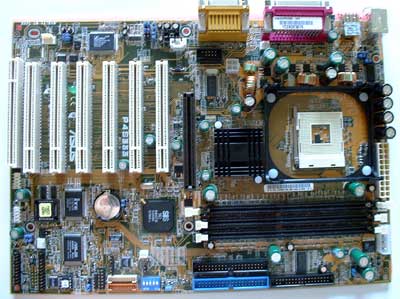
- The CPU
Regarding the CPU, as we intended to continue with extreme overclocking,
we needed to use a Northwood.
Considering the overclocking we would realize, the NorthWood 1.6A appeared
to be the best choice, this would be the CPU we tortured for a while…
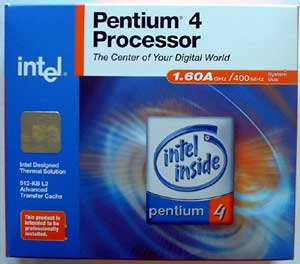 |
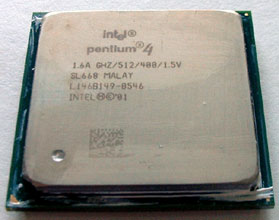 |
After a few tests the platform ran stable at 120MHz / 200MHz and almost
stable after a big boost on the power supply up to 160MHz / 200MHz:
|
FSB : 120 - RAM : 200 - Freq : 1920 Mhz
|
FSB : 160 - RAM : 200 - Freq : 2560 Mhz
|
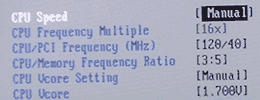 |
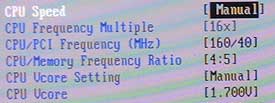 |
|
|
|
Considering the overclock of a NorthWood at 120MHz can be done by anyone, we took this configuration as reference platform for all of our practical tests.

